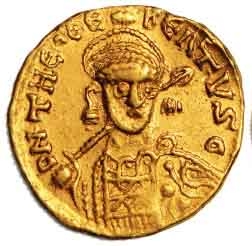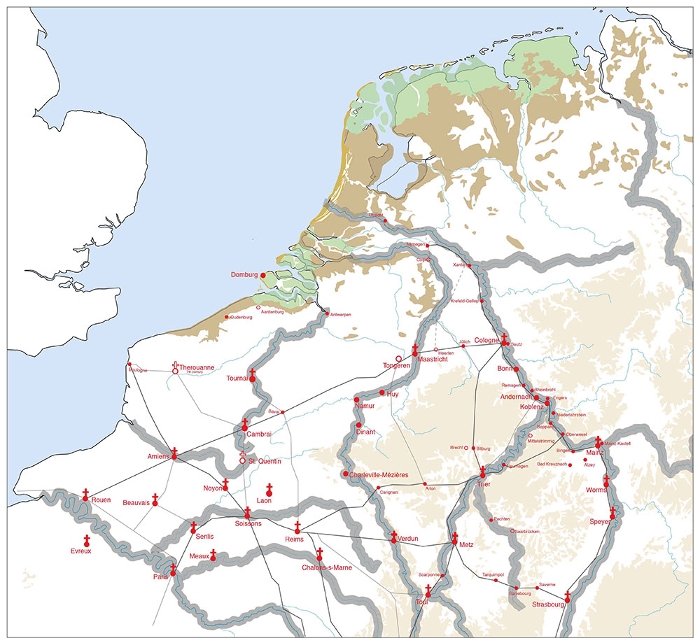Research programme
The Transformation of the Roman World
One of the three long-term research interests of our group concerns the Transformation of the Roman World (c AD 450-900).
- Contact
- Frans Theuws
From periphery to centre

We focus our research on the northern part of Gaul but are always keen to compare developments there with other parts of the Empire. The region between the Seine and Rhine rivers witnessed a remarkable development. From being a peripheral region in late Roman times characterised by shrunken towns and a derelict villa landscape it became the centre of the Carolingian empire and a core economic area in Europe in later medieval and modern times. How could this be?
The dynamic society of early medieval Gaul
This is a simple question but the possible answers are not easily given. Early medieval northern Gaul was a highly dynamic society that profited extremely well from the infrastructural heritage of the Roman Empire. Its rural population seems to do very well looking at the wealth in their graves in the sixth and seventh centuries. Its aristocracy gained the upper hand in the competition with aristocracies from other parts of former Gaul in the eight century. The material culture recovered from cemeteries and settlements suggest some sort of cultural coherence.
We study this material culture but wonder how this cultural coherence came about. What role did migration and mobility play? What kind of exchange modalities were there and if there were several how did they articulate? What is the meaning of the new ritual repertoires developing in this changing world? We have many questions, a lot of material remains to study and a whole series of unconventional ideas how to interpret the material culture and practices of those days. We find inspiration in neighbouring fields such as historiography, anthropology and ethnography but also literary theory. We like to think out of the box.

Long traditions
Research into this field can boast of a long tradition. Written evidence is reinterpreted by every generation of scholars and the volume of archaeological evidence is immense and still growing at an incredible speed. Moreover new theories on the nature of the economy and the way exchange and production are embedded in the world of ideas, norms and values create new perspectives on old data.
However, archaeological research into the nature of society in northern Gaul in post-Roman times is also fragmented, characterised by national traditions and an insufficient publication of relevant data. We have to find solutions for those problems by cooperating internationally.
Contribution
We like to contribute to the debate on the transformation of the Roman world in various ways.
First by contributing to the theoretical debate on the economy of the period and how it is embedded in the social, cultural en religious spheres in society and on the nature of the burial rites of late Roman and early medieval times.
Second by contributing to the creation of high quality data of cemeteries and settlements and by supporting others who deal with such evidence.
Third by carrying out thematic research for instance in relation to the infrastructure of northern Gaul, or the modalities of exchange on the basis of specific categories of material culture; aspects of the burial rites; aspects of urban development, or methodological problems.
In our research projects list you will find a number of projects that fall under the umbrella of the Transformation of the Roman World.
Research Master 'The transformation of the Roman World'
An important contribution to his research is provided by the students in the Research Master (RMA) ‘The transformation of the Roman World’. In this Research Master teaching and research are intimately connected. Each year a group of RMA students tackle a specific problem such as “Mediterranean imports in the north’, ‘the interpretation of privileged graves’ or ‘scientific research of pottery’.
